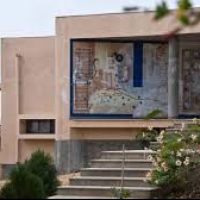Sahyadri School in Pune, Maharashtra Admission, Fees Structure

Where is Sahyadri School ?
Sahyadri School is Located in Pune , Maharashtra, India
Address of Sahyadri School, Pune
Tiwai Hill
Rajgurunagar (Khed),
Pune-410513
Maharashtra
India
+91 9422304265
+91 9422304267
office@sahyadrischool.org
How do I contact Sahyadri School?
Call at +91 9422304265 to contact Sahyadri School
About Sahyadri School
The school, while not encouraging competition in the form currently accepted by society, endeavours to create an atmosphere where students can excel. An expectation of courtesy, kindness, and mutual respect helps to create an atmosphere where students can take the initiative required for active learning. Classes are designed to create close interaction and participation. This contrasts with the vast outdoors where the children explore their surroundings amidst trees, mountains and water-bodies; and learn to connect with nature. A well-stocked library ensures adequate opportunity for reading, while well-equipped laboratories, computer facilities and audio-visual equipment and a unique tinker-shed, further enrich learning. The students also become acquainted with traditional arts, craft, music and dance. During the seven-year program, starting from class 4, the students not only become proficient in subjects in meeting the needs of an ICSE exam at the end of class 10, but also become acquainted with traditional arts, craft, music and dance. A well-stocked library with carefully selected books ensures adequate opportunity for reading. Well-equipped laboratories, computer facilities and audio-visual equipment are resources that further enrich learning. The school, while not encouraging competition in the form currently accepted by society, endeavours to create an atmosphere where students can excel. Classes are intentionally small to provide close contact between teacher and students where student motivation and participation become essential. An expectation of courtesy, kindness, and mutual respect helps to create an atmosphere where students can take the initiative required for active learning. But, most of all, it is the vast natural landscape in which the school is housed that provides a setting that invites external exploration and internal inquiry, inspiring students to go beyond the everydayness that prevents the mind from stagnating, whilst appreciating the value of stillness and wonder.
05 million while the population of the metropolitan region is estimated at 74 million Situated 560 metres (1,837 feet) above sea level on the Deccan plateau on the right bank of the Mutha river, Pune is also the administrative headquarters of its namesake district In the 18th century, the city was the seat of the Peshwas, the prime ministers of the Maratha Empire and was one of the most important political centres on the Indian subcontinentPune is widely regarded as the second major "IT hub of India" and the top "automobile and manufacturing hub of India".
It is known as the "Oxford of the East" with the presence of a wide range of educational institutions India's first indigenously-run girls' school was started in Pune by Savitribai Phule along with her associate Fatima Sheikh The city has emerged as a major educational hub in recent decades, with nearly half of the total international students in the country studying in Pune Research institutes of information technology, education, management and training attract students and professionals from India and overseas
The Godavari and the Krishna are the two major rivers in the state Marathi is the most widely spoken language and is also the official language of the state Spread over 307,713 km2 (118,809 sq mi), it is the third-largest state by area in India Maharashtra is bordered by the Arabian Sea to the west, the Indian states of Karnataka and Goa to the south, Telangana to the southeast and Chhattisgarh to the east, Gujarat and Madhya Pradesh to the north, and the Indian union territory of Dadra and Nagar Haveli and Daman and Diu to the northwest Nagpur hosts the winter session of the state legislature.
The state has three international airports, Chhatrapati Shivaji Maharaj International Airport (Mumbai), Dr Babasaheb Ambedkar International Airport (Nagpur), and Pune Airport (Lohegaon, Pune) The state is home to three railways headquarters viz Central Railway (Chhatrapati Shivaji Maharaj Terminus), Konkan Railway (CBD Belapur) and Western Railway (Churchgate) The High Court of the state viz.
Bombay High Court is located in Mumbai Prior to Indian independence, Maharashtra was chronologically ruled by the Satavahana dynasty, Rashtrakuta dynasty, Western Chalukyas, Deccan sultanates, Mughals and Marathas, and the British Ruins, monuments, tombs, forts, and places of worship left by these rulers are dotted around the state The state is home to two UNESCO World Heritage Sites: Ajanta and Ellora caves Pune is known as the 'Oxford of the East' due to the presence of several well-known educational institutions.
Nashik is known as the 'Wine Capital of India' as it has the largest number of wineries and vineyards in the country Maharashtra is the most industrialised state in India and the state's capital, Mumbai is India's financial and commercial hub The state has played a significant role in the country's social and political life and widely considered a leader in terms of agricultural and industrial production, trade and transport, and education Maharashtra is one of the most developed and prosperous Indian states and continues to be the single largest contributor to the national economy with a share of 15% in the country's GDP The economy of Maharashtra is the largest in India, with a gross state domestic product (GSDP) of ₹28.
78 trillion (US$400 billion) and has the country's 13th-highest GSDP per capita of ₹207,727 (US$2,900) Maharashtra is the fifteenth-highest ranking among Indian states in human development index